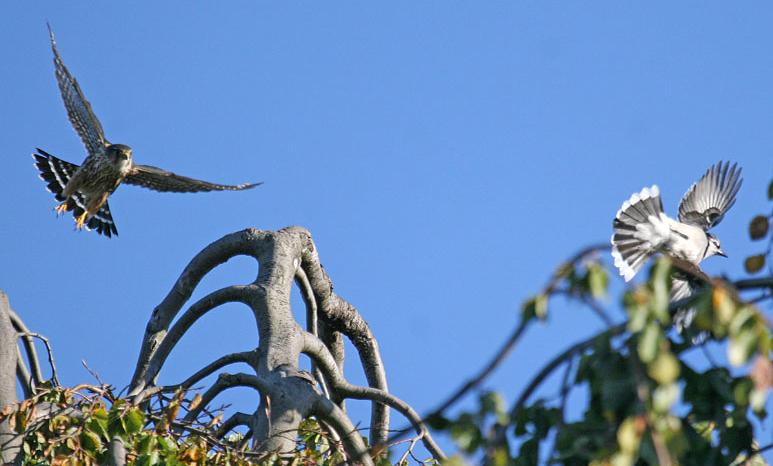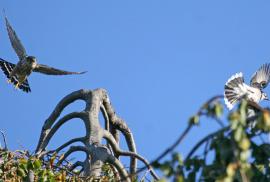Guide to Boreal Birds
Overview
The so-called "Pigeon Hawk" is most abundant during the migrations of smaller birds, on which it feeds. It is swift and aggressive, regularly harassing larger hawks and gulls and attacking intruders at its nest. As with other falcons, the female begins incubating as soon as the first egg is laid so the young hatch at intervals; when food is scarce, the larger young are fed first, the smaller ones sometimes dying of starvation. This seemingly heartless procedure ensures that some young will be raised successfully even in hard times.
Description
10-14" (25-36 cm). W. 23" (58 cm). A jay-sized falcon, stockier than American Kestrel. Slate colored (males) or brownish (females) above; light and streaked below. Long tail boldly banded. Lacks facial stripes of most other falcons.
Voice
High, loud cackle, also klee-klee-klee like an American Kestrel, but usually silent.
Nesting
5 or 6 buff eggs, stippled with purple and brown, placed in a tree cavity without a nest or lining, on a rocky ledge, or in an abandoned crow's nest.
Habitat
Coniferous forests; more widespread in winter.
Range/Migration
Breeds from Alaska east through Mackenzie to Newfoundland and south to Wyoming, Montana, and northeastern Maine. Winters mainly in southern United States north along West Coast to British Columbia and on East Coast to southern New England; locally elsewhere north to southern Canada. Also in tropical America and Eurasia.



